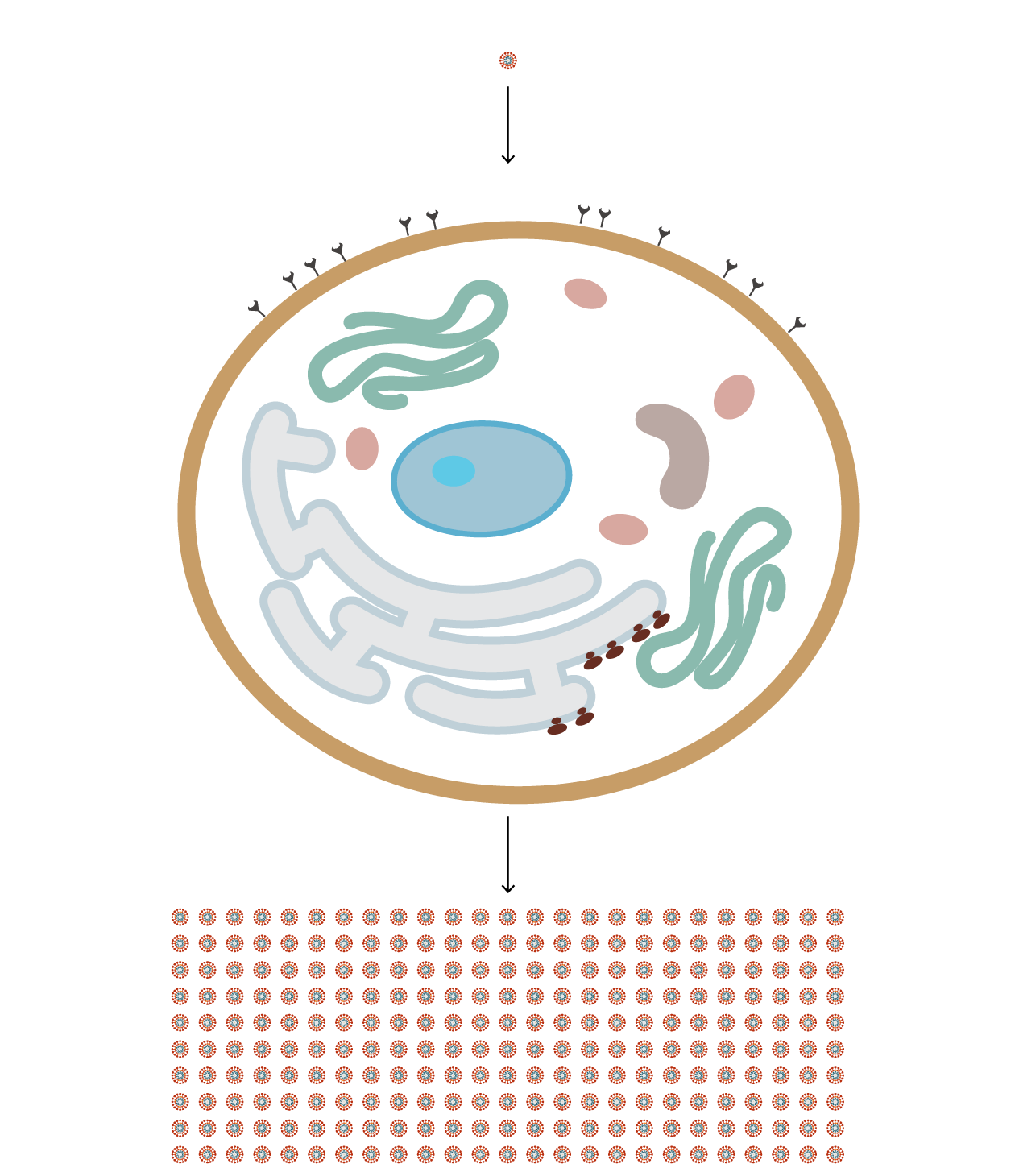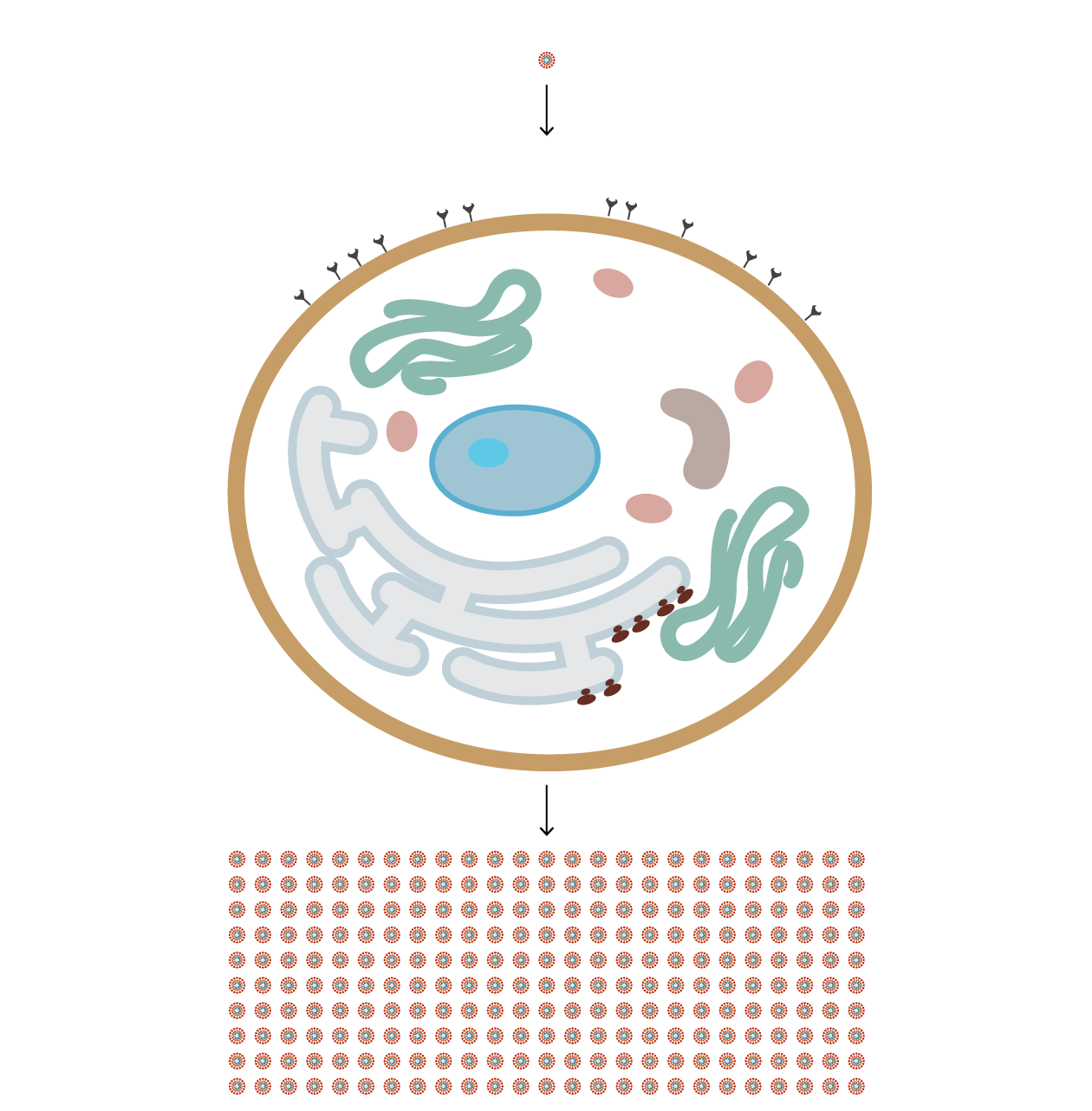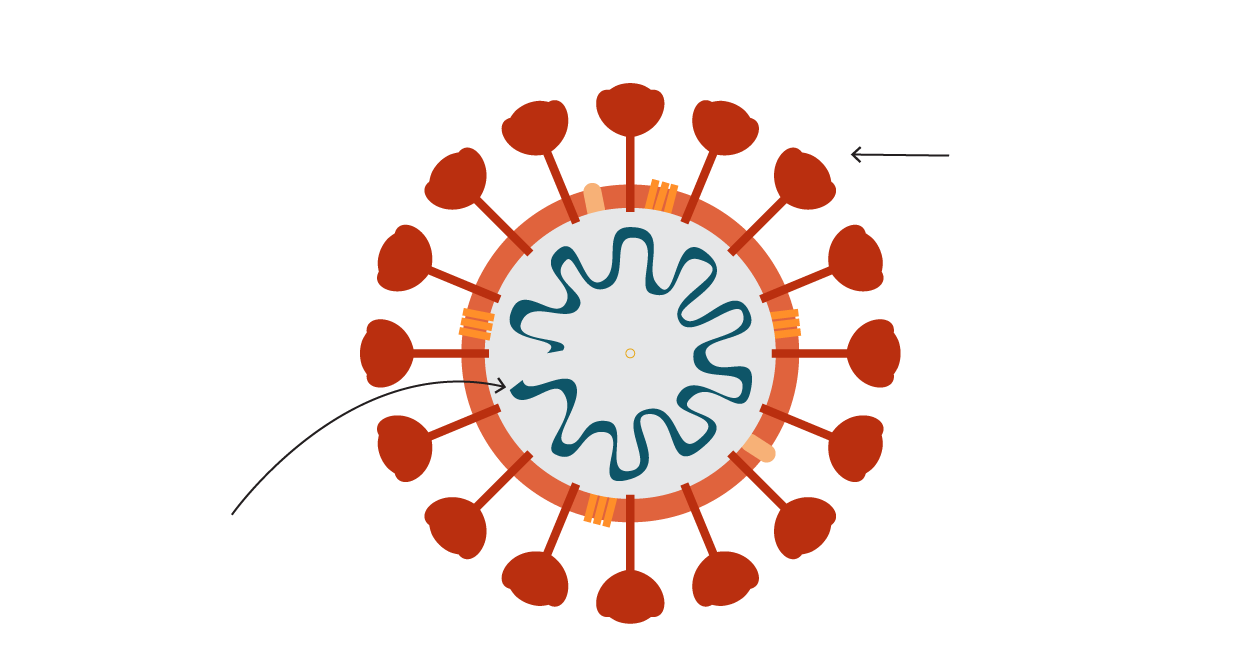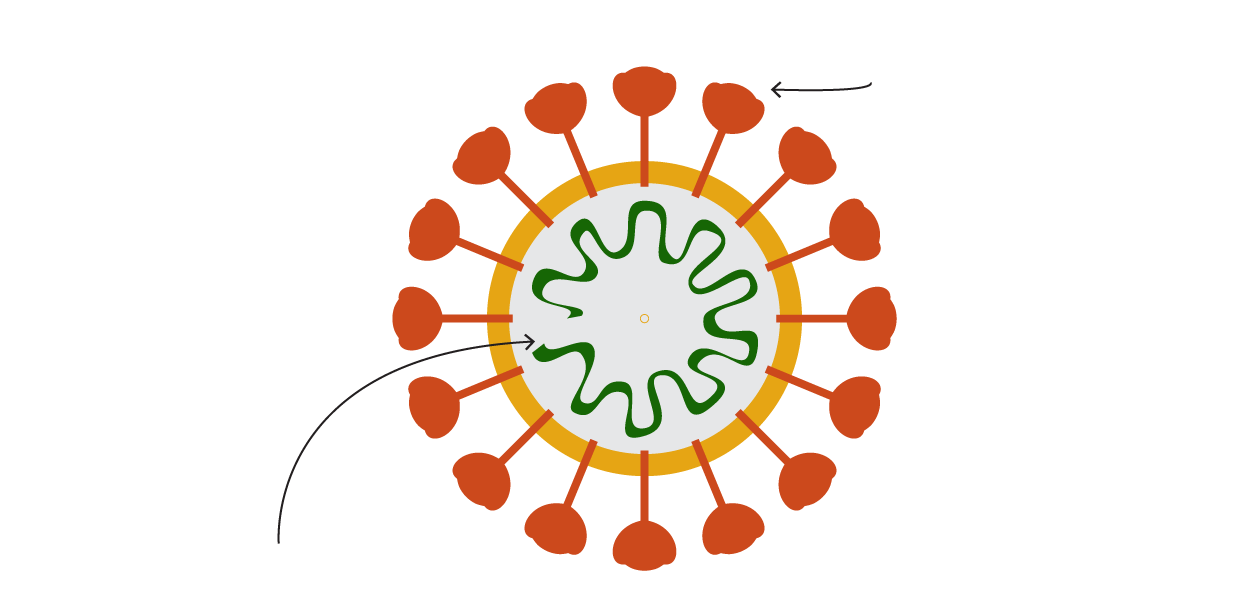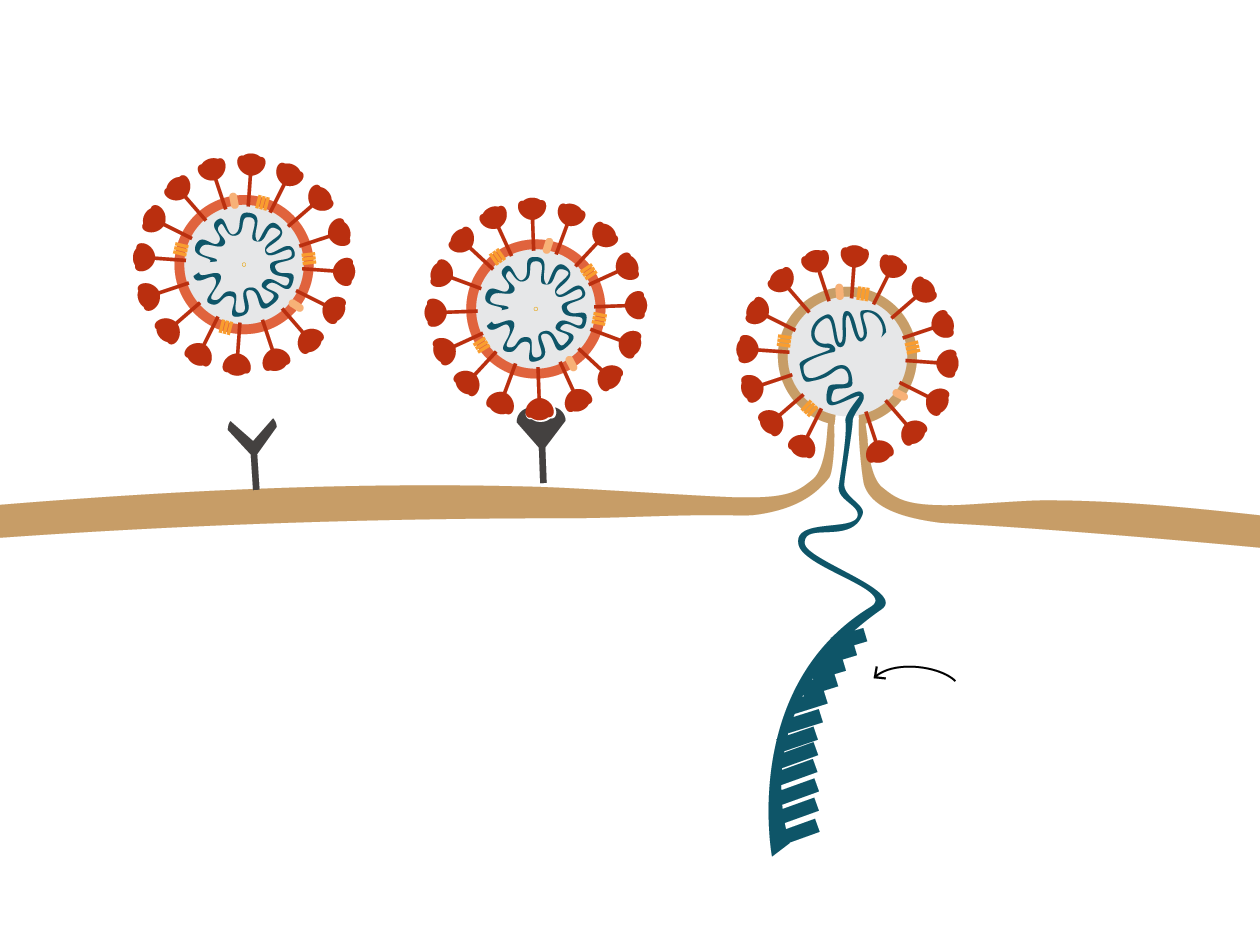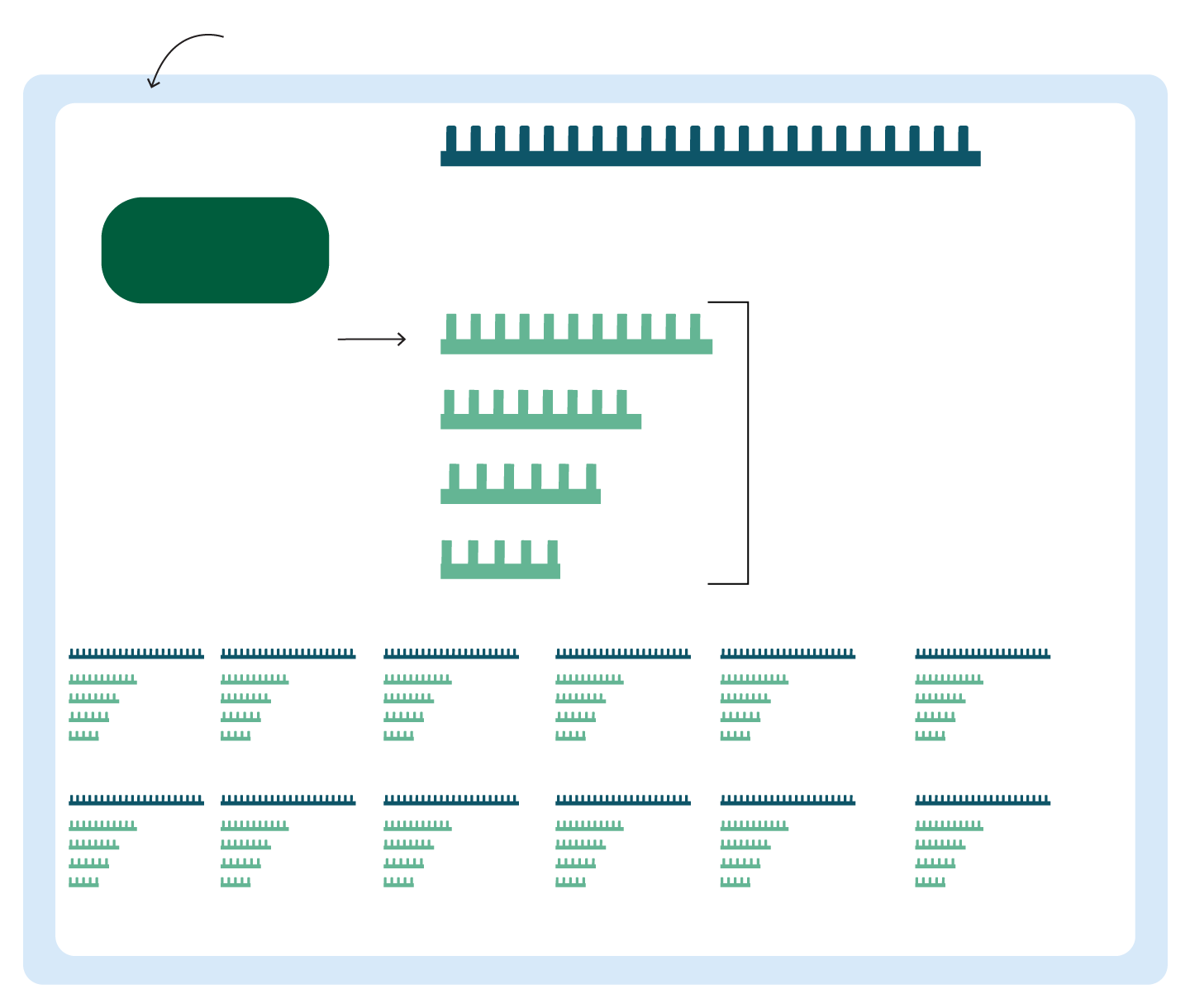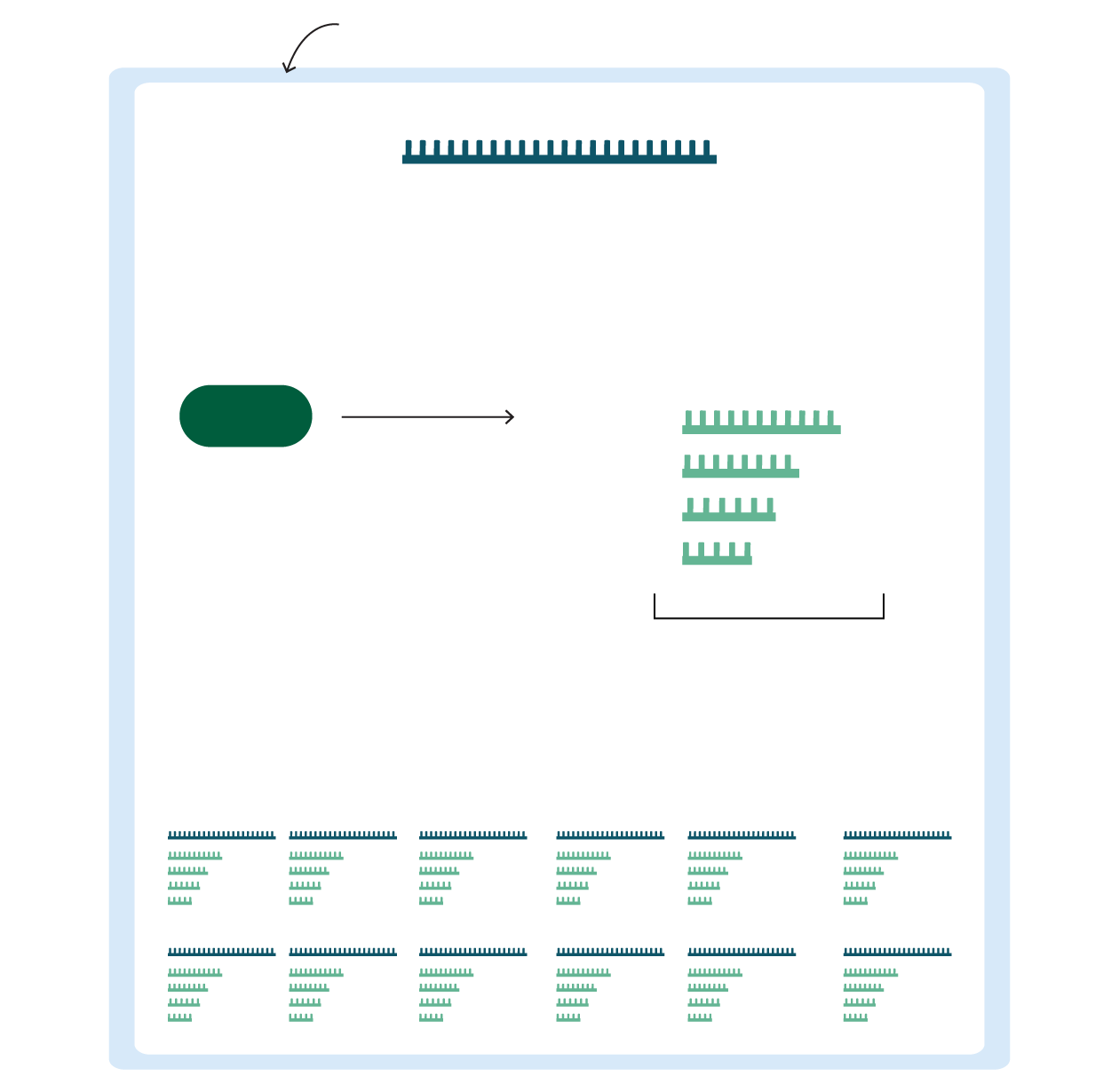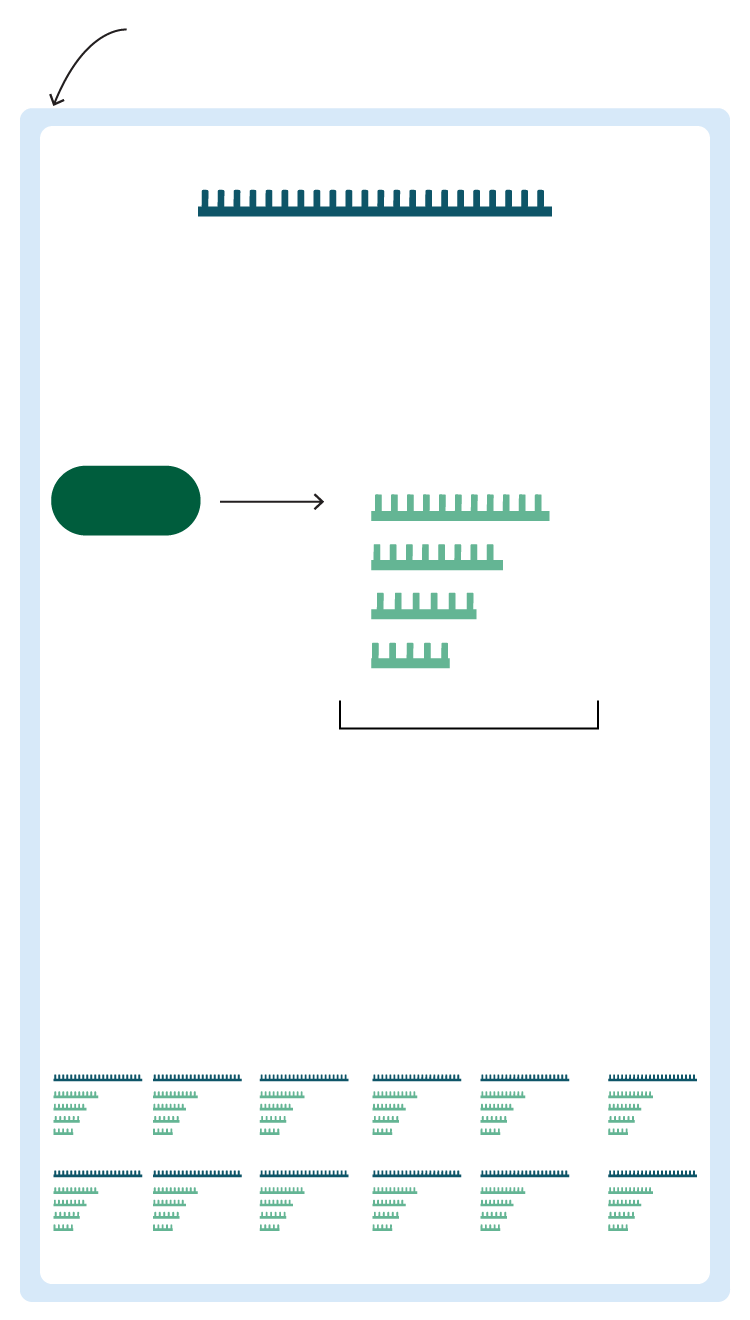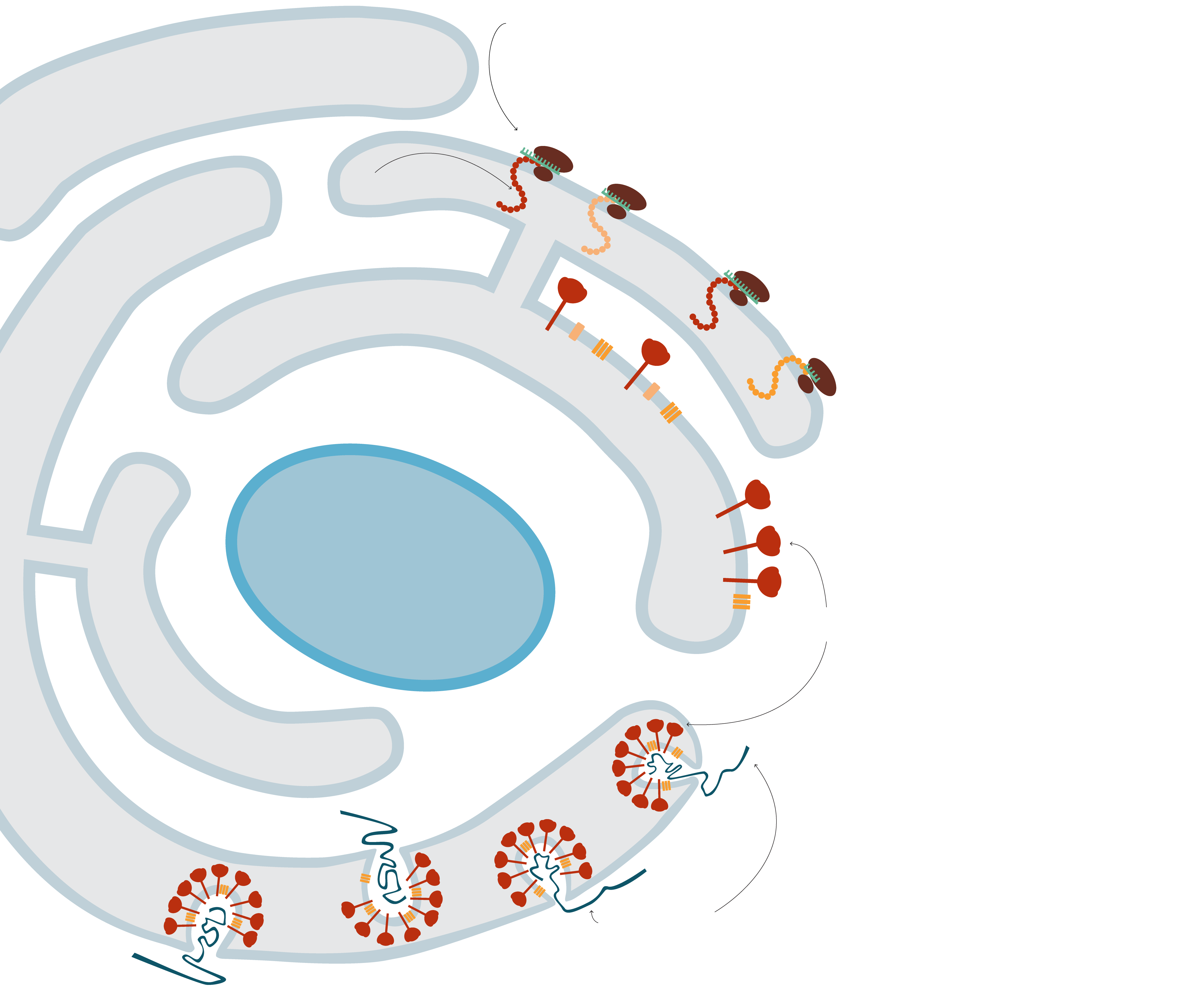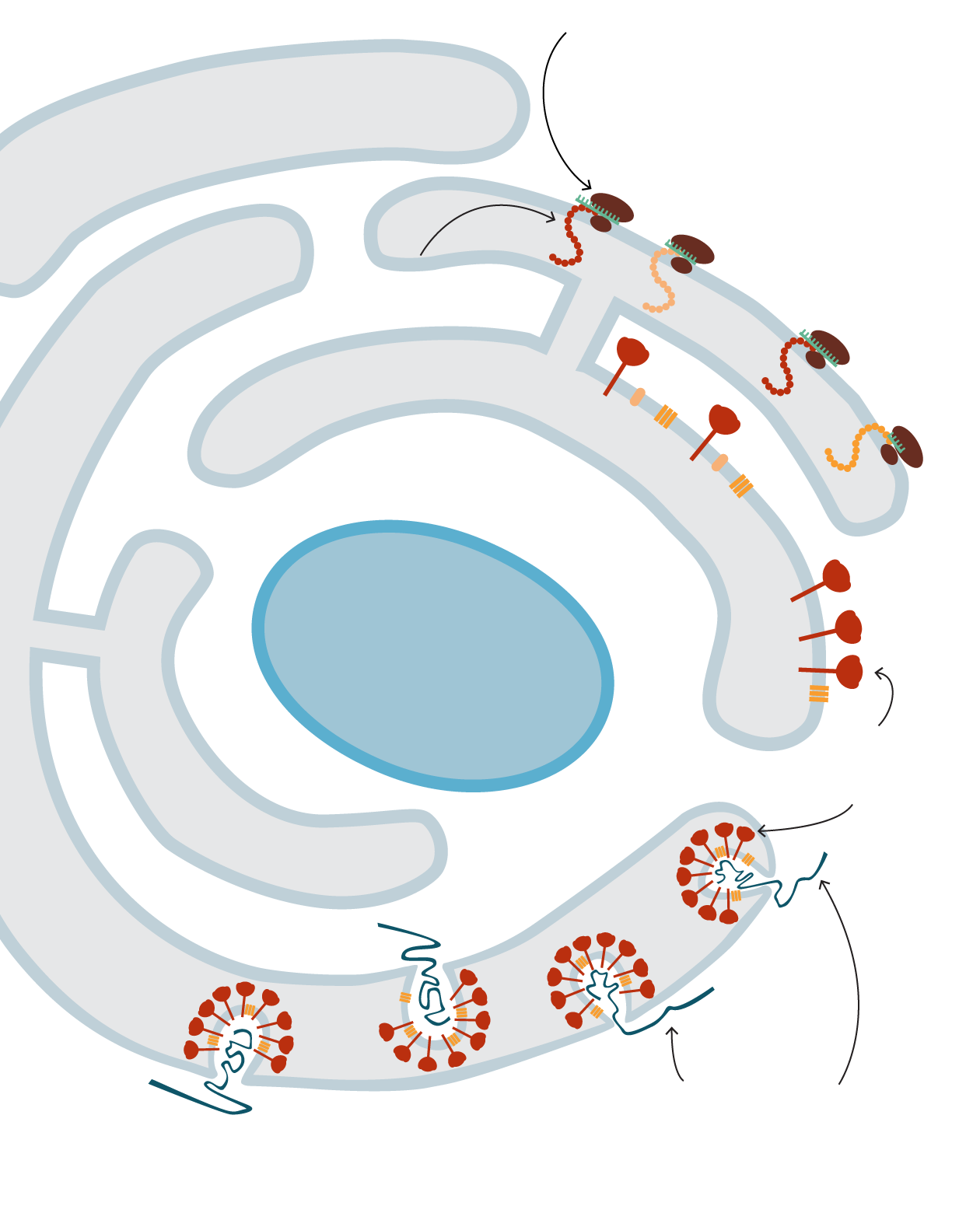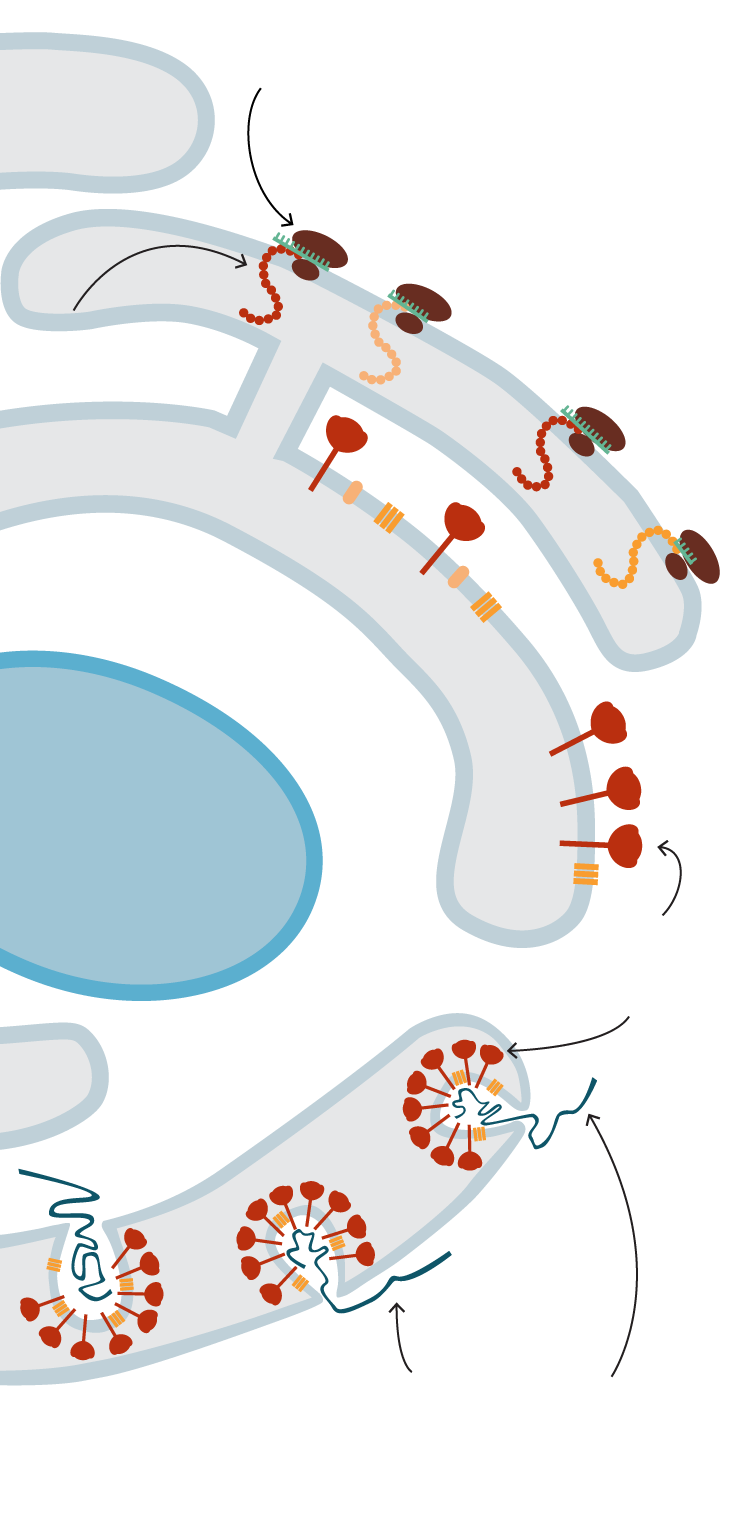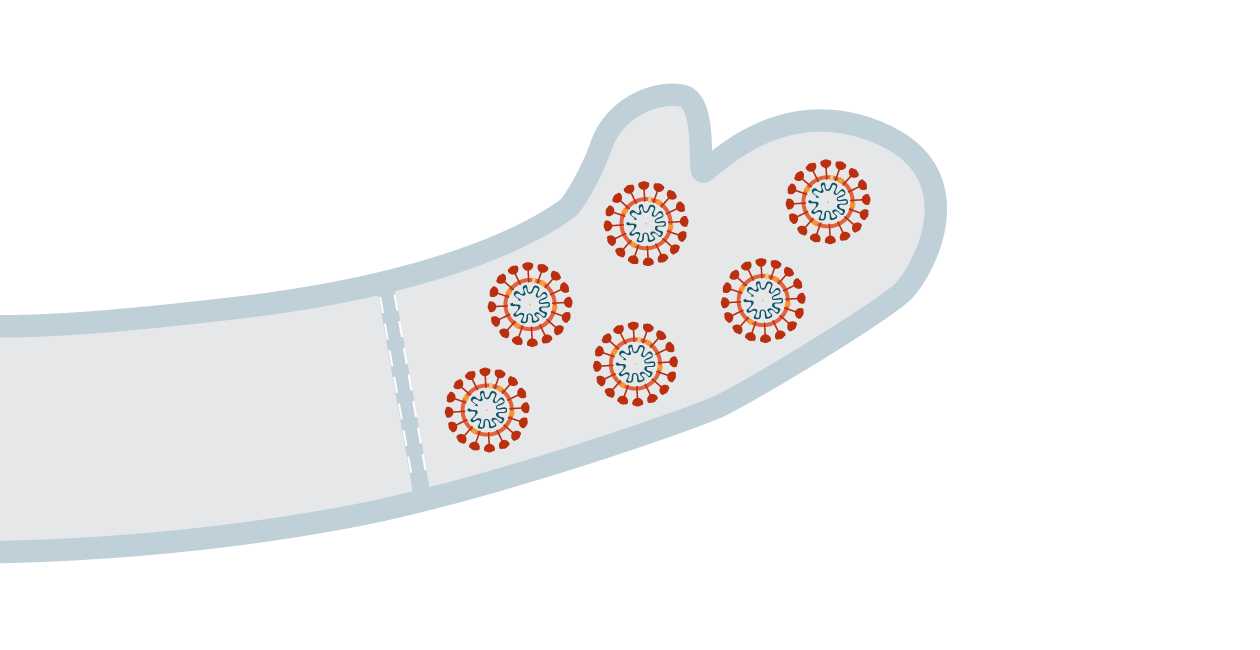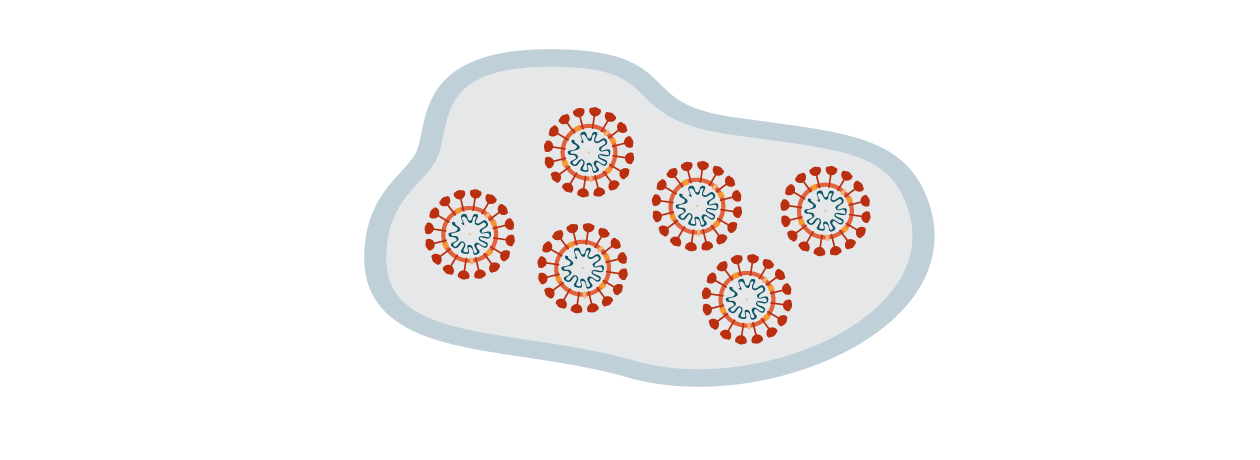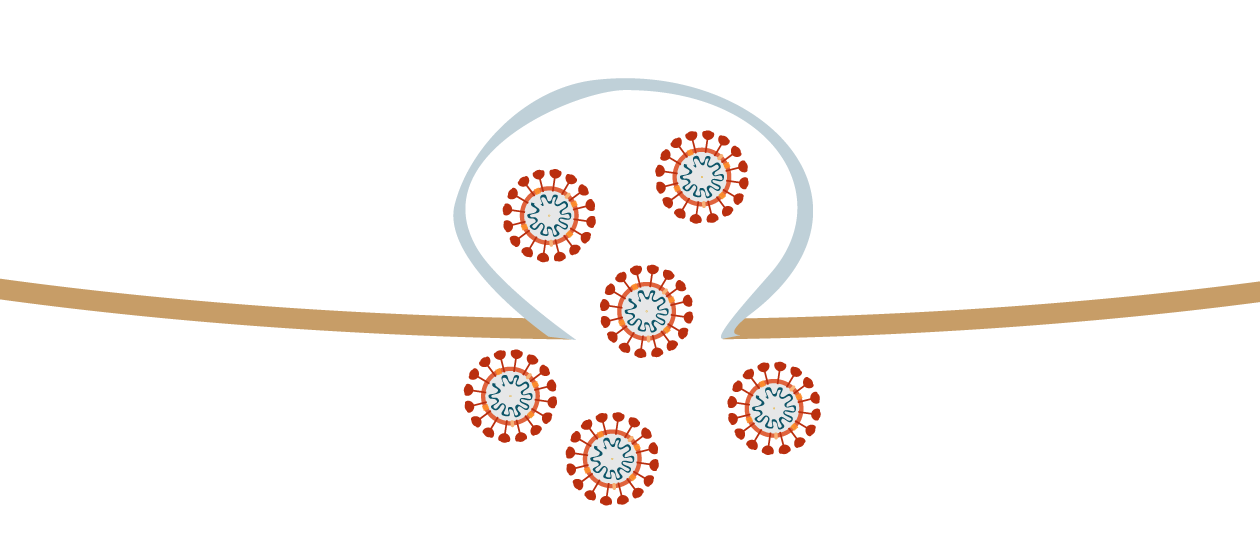How coronaviruses replicate inside you
Viruses can’t reproduce by themselves. They contain instructions for how to copy themselves but lack the tools and supplies to do it. That’s why viruses have two jobs: invade living cells and turn them into virus-making factories.
(Not to scale. Coronaviruses are hundreds of times smaller in width than human cells.)
Coronaviruses store their genetic information as long single strands of RNA. The RNA stores the recipes for making all the parts the virus needs to copy itself.
One key part of the virus is the spike protein. The spikes protrude from the surface of the virus and resemble a crown, or corona in Latin.
Coronaviruses use their spikes to infiltrate living cells. When the conditions are right, the virus enters.
Once inside, the coronavirus enlists the infected cell to produce the parts it needs: RNA and proteins. First, the virus commandeers the cell’s machinery into making tools that can copy coronavirus RNA in bulk. The copying process occurs in a double-membrane compartment that keeps the virus hidden from the cell.
Some of the RNA copies are packaged into the next generation of viruses. Other copies are used to tell the cell how to make viral proteins, including the ones that will encase the RNA.
These proteins are made and assembled in the part of the cell that serves as a factory, warehouse and delivery system.
A copy of the original viral RNA is corralled into a section of the membrane that’s embedded with newly made viral proteins. When the RNA-enclosed membrane pinches shut, a new virus is formed.
The newly assembled viruses travel in a special compartment to leave the cell.
One virus-infected cell can produce hundreds to thousands of viruses.
And then the cycle begins again.
